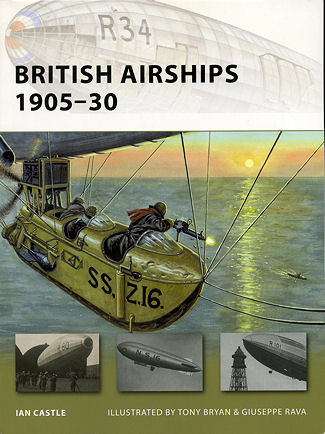 At the
turn of the century, one of the major innovations was flying. Heavier than air
got its start during this time, but lighter than air had been around for a bit.
The military development of airships by Germany in particular, resulted in the
efforts of France, Italy and Great Britain to develop their own. It is in Great
Britain that very little was initially done. The British Army didn't think they
were anything useful and while the Navy did, they didn't have the funding needed
for development.
At the
turn of the century, one of the major innovations was flying. Heavier than air
got its start during this time, but lighter than air had been around for a bit.
The military development of airships by Germany in particular, resulted in the
efforts of France, Italy and Great Britain to develop their own. It is in Great
Britain that very little was initially done. The British Army didn't think they
were anything useful and while the Navy did, they didn't have the funding needed
for development.
Hence, initial forays into airship building were the results
of limited local ingenuity (much of us less than successful) and overseas
purchases. None of these airships saw any sort of major service and in their
short lives, were generally used for training and testing.
It was when the war began, or a bit before, that the strides
made by Germany really hit home to the British and there was a need to start
production. These early war airships were modest to say the least and their
limited range made them useful only for local convoy patrols and some short
range scouting. Even when rigid airship construction got underway, it didn't go
that well until a shot down Zeppelin was available for some reverse engineering.
As many countries using hydrogen for lift discovered, the greater lifting power
of the gas was matched by the flammability of it and it was this feature, than
in the late 1920s and into the 1930s doomed airship development in the UK for
generations.
In this book on the subject, author Ian Castle looks at
airships in general providing the three basic types, how the Army planned on
using them, their shift to Naval control and how they functioned in the early
war period. Then there is a look at the various wartime designs as well as the
lone semi-rigid and fully rigid airships. This is followed by their wartime
operations and a look at why they did not survive much more than a decade past
the war.
The book is full of superb period photos and the
superb artwork of illustrators Tony Bryan and Giuseppe Raval really help bring
to light the fragility and the look of these airships. In all, it makes for
another fascinating read and one that I know will draw you into it as it did I.
August 2009
For more on the complete line of Osprey books,
visit www.ospreypublishing.com. In the US, it is
Osprey Direct at 44-02 23rd St, Suite 219, Long Island City, NY 11101., where you can
get a catalogue of available books.
If you would like your product reviewed fairly and quickly, please contact
me or see other details in the Note to
Contributors.
 At the
turn of the century, one of the major innovations was flying. Heavier than air
got its start during this time, but lighter than air had been around for a bit.
The military development of airships by Germany in particular, resulted in the
efforts of France, Italy and Great Britain to develop their own. It is in Great
Britain that very little was initially done. The British Army didn't think they
were anything useful and while the Navy did, they didn't have the funding needed
for development.
At the
turn of the century, one of the major innovations was flying. Heavier than air
got its start during this time, but lighter than air had been around for a bit.
The military development of airships by Germany in particular, resulted in the
efforts of France, Italy and Great Britain to develop their own. It is in Great
Britain that very little was initially done. The British Army didn't think they
were anything useful and while the Navy did, they didn't have the funding needed
for development.